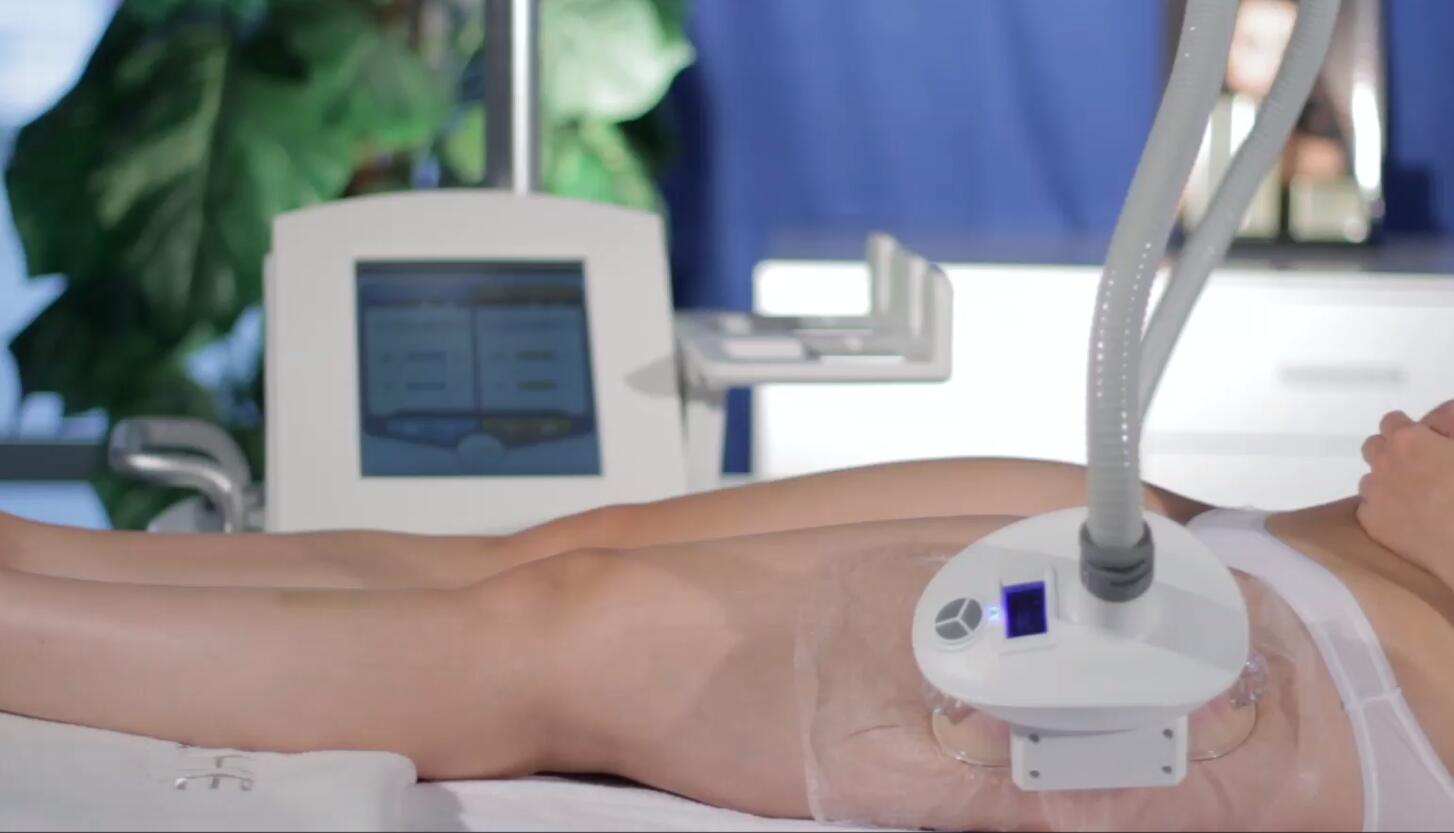Cryolipolysis Machine and Biology: Mechanisms of Fat Cell Death and Regeneration by Freezing
With the continuous progress of science and technology, people’s pursuit of beauty is also increasing. Cryolipolysis technology, as a non-invasive fat reduction method, has received widespread attention for its safe and effective features. Cryolipolysis machine utilizes specific low-temperature technology to selectively target fat cells for freezing, causing them to natura
lly wither away, thus achieving the purpose of fat reduction.
Working Principle of Cryolipolysis Machine
Cryolipolysis machines utilize specific cryogenic technology to expose fat cells in the targeted treatment area to temperatures below their freezing point. During the freezing process, water within the fat cells will begin to freeze and form ice crystals. The formation of these ice crystals disrupts the structure within the cells, leading to impaired cell function and gradual death. Due to the precise temperature control of the cryolipolysis machine, the surrounding normal tissues such as skin and muscle will not be significantly damaged due to their high tolerance.

The process of fat cell death by freezing
Formation of intracellular ice crystals: When fat cells are exposed to low temperatures, the water inside the cells starts to freeze and form ice crystals. These ice crystals damage intracellular organelles and cell membrane structures, leading to loss of cellular function.
Cell Membrane Damage: As more ice crystals are formed inside the cell, the pressure on the cell membrane gradually increases, which may eventually lead to the rupture of the cell membrane. The rupture of the cell membrane not only leads to cell death, but also triggers an inflammatory response in the surrounding tissues.
Activation of apoptotic mechanisms: Cryostimulation activates apoptotic mechanisms within the adipocyte. Apoptosis is a programmed cell death process that induces adipocyte self-death by activating specific apoptotic signaling pathways. During apoptosis, cells undergo a series of complex biochemical reactions, such as chromatin condensation and nuclear fragmentation, which ultimately lead to cell death.
Regeneration mechanism after cryolipolysis
Although cryolipolysis leads to the death of fat cells, the human body has a certain regenerative capacity. After cryolipolysis, the surrounding tissues will undergo a series of repair and regeneration processes.
Inflammatory Response: After cryolipolysis, the surrounding tissue undergoes an inflammatory response to remove dead fat cells and repair damaged tissue. This process attracts inflammatory cells such as macrophages and fibroblasts to congregate in the damaged area to carry out the cleaning and repair work. Macrophages phagocytose dead fat cell debris, while fibroblasts secrete collagen and other growth factors to promote tissue regeneration.
Formation of new adipocytes: Following the inflammatory response, fibroblasts will begin to secrete collagen and other growth factors to promote tissue regeneration. At the same time, some of the former adipocytes will also differentiate into new adipocytes in response to the growth factors, filling the space left by the dead adipocytes. This process takes some time, and new fat cells will gradually form and mature, restoring the structure and function of the local adipose tissue.
Neovascularization: In order to support the growth and metabolism of new fat cells, the process of neovascularization is also initiated. The new blood vessels provide the damaged area with sufficient oxygen and nutrients to promote rapid tissue recovery. Neovascularization is a complex process that involves multiple steps of endothelial cell proliferation, migration and blood vessel formation.
Factors Affecting the Effectiveness of Cryolipolysis
The effectiveness of Cryolipolysis is affected by a number of factors, including an individual’s age, physical condition, and the distribution and number of fat cells. Older individuals have slower metabolism, which may affect the apoptosis and regeneration process of fat cells; individuals in poorer physical condition may have chronic diseases or abnormalities in the immune system, which may affect the effect of cryolipolysis; the distribution and number of fat cells may also affect the treatment effect, and different parts of the adipose tissues may have different sensitivities and response speeds to cryolipolysis. In addition, the technical parameters of the cryolipolysis machine, the skill level of the operator as well as the post-treatment care and maintenance will also have an impact on the results. Therefore, when choosing cryolipolysis treatment, individual differences and treatment conditions should be considered comprehensively to formulate a personalized treatment plan.

Applicable People and Contraindications of Cryolipolysis
Cryolipolysis is suitable for those who wish to reduce localized fat accumulation but do not want to undergo traditional surgery. It is particularly suitable for fat reduction in areas such as the waist, abdomen, back and buttocks. However, cryolipolysis may not be suitable for certain groups of people such as pregnant women, people recovering from surgery, and people with abnormal immune systems. Pregnant women and those recovering from surgery have special medical conditions and need to avoid any treatments that may affect their bodies; people with abnormal immune systems may overreact to cryo-stimulation or may not be able to effectively remove dead fat cells. Therefore, before using a cryolipolysis machine, individuals should be thoroughly evaluated and examined to ensure the safety and effectiveness of the treatment.
Conclusion
Cryolipolysis machine, as a new non-invasive fat reduction technology, has a broad application prospect in the field of biology. Through in-depth study of the mechanisms of fat cell death and regeneration by freezing, we can further optimize the cryolipolysis technique to improve the therapeutic effect and reduce the side effects. Meanwhile, with the continuous development of biotechnology, we may also discover more biomolecules and signaling pathways related to adipocyte apoptosis and regeneration in the future, providing new ideas and directions for the development of cryolipolysis technology.







